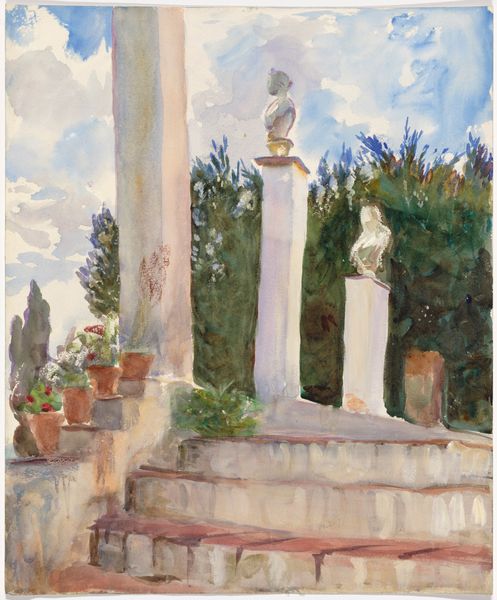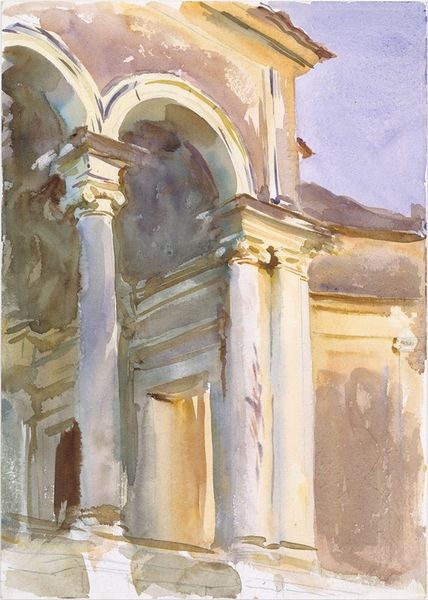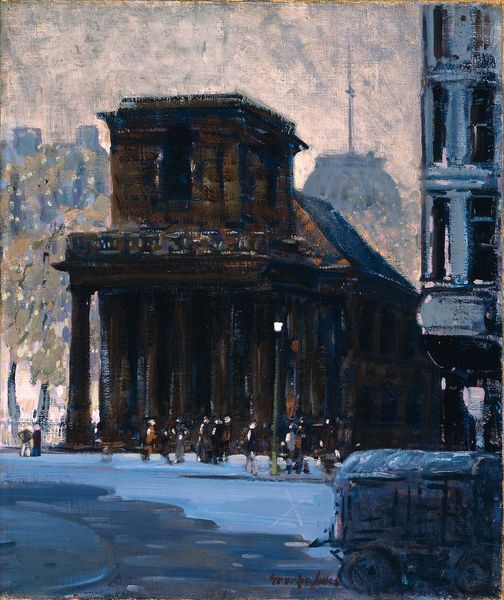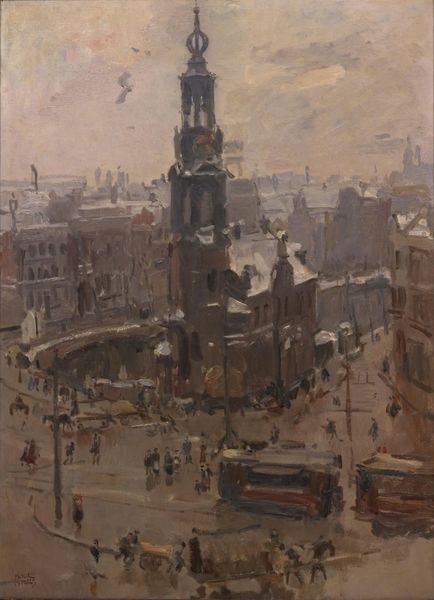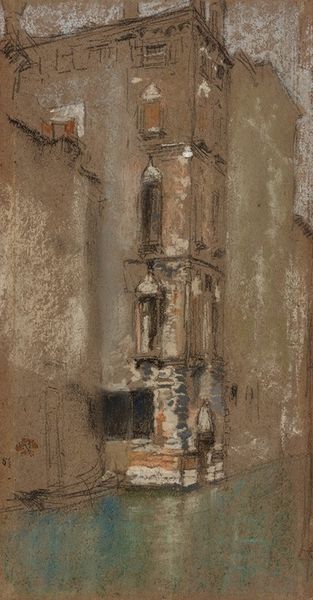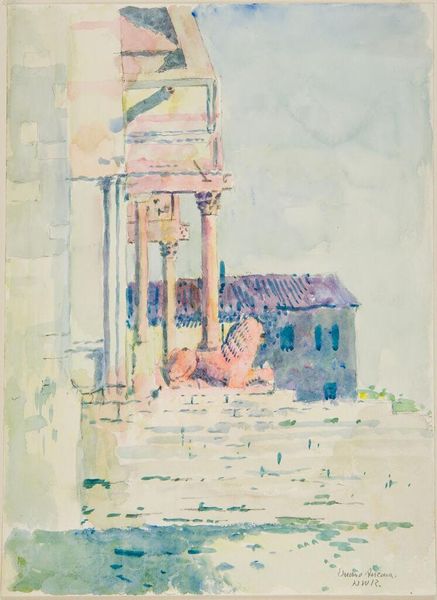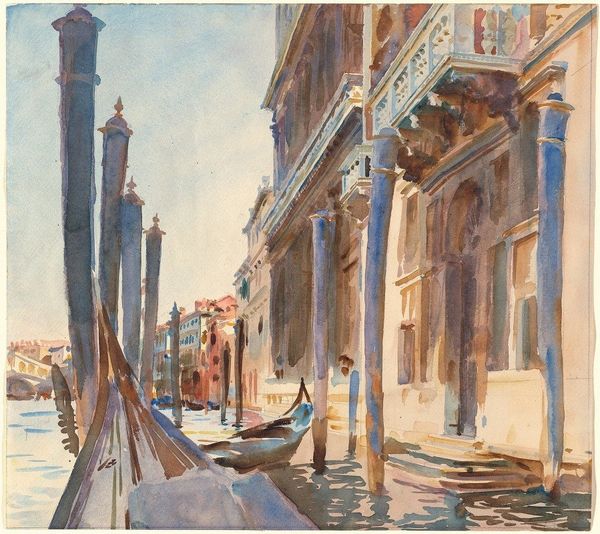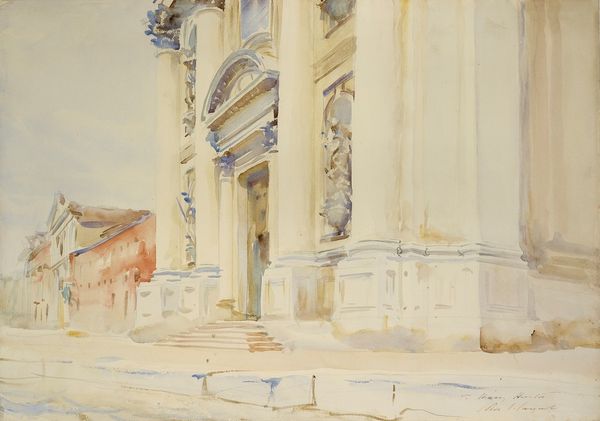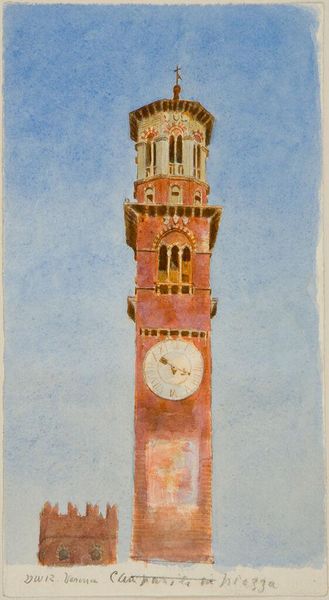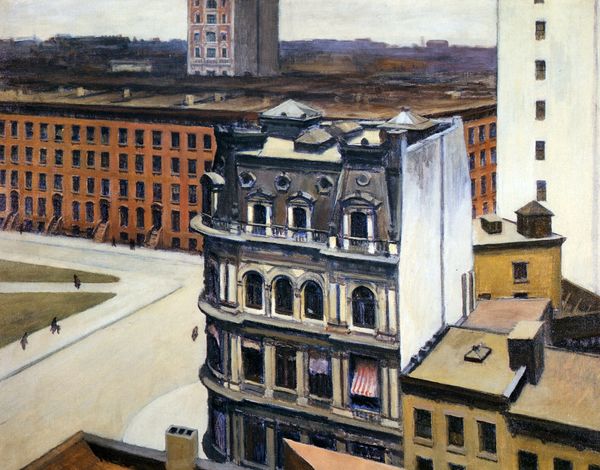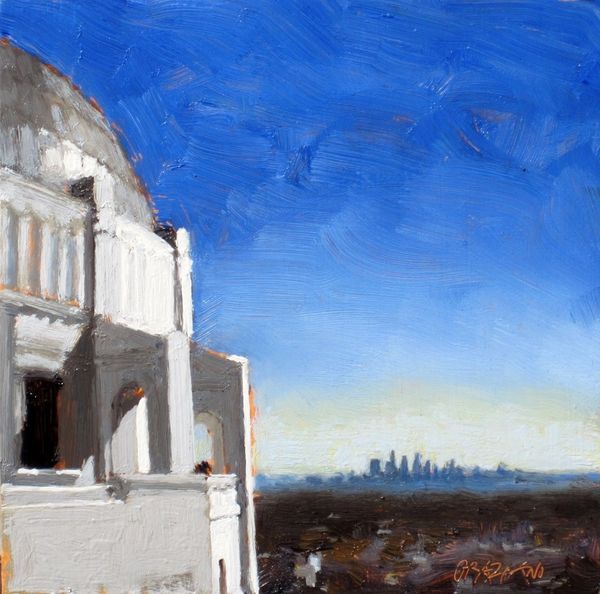
painting, oil-paint
#
painting
#
oil-paint
#
romanesque
#
oil painting
#
cityscape
Dimensions: 23.5 x 35 cm
Copyright: Grigor Khanjyan,Fair Use
Curator: The crisp, sun-drenched quality immediately strikes me. It feels almost aggressively vertical, yet serenely balanced. Editor: This is Grigor Khanjyan's "Rome," painted in 1962 using oil on canvas. The artwork presents a scene dominated by Trajan's Column against the backdrop of the city's architecture. Curator: Interesting to consider the backdrop itself. Khanjyan, an Armenian artist, engages with a powerful symbol of Roman imperial authority. In doing so, what is he perhaps commenting on concerning nationalism and historical legacies in the context of the mid-20th century? Editor: Note how Khanjyan utilizes color. The muted palette focuses on light, subtly fracturing it across the cylindrical surface. It evokes the material essence, the cool stone. The buildings almost seem secondary, serving to anchor the central column. Curator: I find it impossible to separate that perceived simplicity from the reality of Rome itself—a place layered with palimpsests of power. Considering Khanjyan’s Soviet Armenian background, how does viewing Rome's grandeur influence his work? Is it critique, celebration, or something more complicated? Editor: His brushwork also guides our eye upwards. There is a definite energy there—a dynamic composition using an otherwise static monument. Khanjyan captures the timeless appeal of classical form using an Impressionistic language. Curator: And what of the gaze directed upward? It implicitly asks the viewer to engage in that interrogation of history, of enduring symbols of power, especially relevant during the Cold War, in that liminal period of cultural reconstruction and reckoning. Editor: Seeing how Khanjyan manages to both abstract and define space allows one to appreciate not just its immediate aesthetic impression, but how its visual design lends the column an almost disembodied and iconic status. Curator: Ultimately, this image serves as an example of the complexities in translating history onto canvas and a broader statement on civilization’s intersection between time, place, and identity. Editor: Yes, by looking past representation and at the construction of the art itself, the work evokes something genuinely moving, regardless of background.
Comments
No comments
Be the first to comment and join the conversation on the ultimate creative platform.
